Adapting Stephen King's The Cat From Hell: One Of King’s Craziest Endings Gets Executed In 1990’s Tales From The Darkside: The Movie
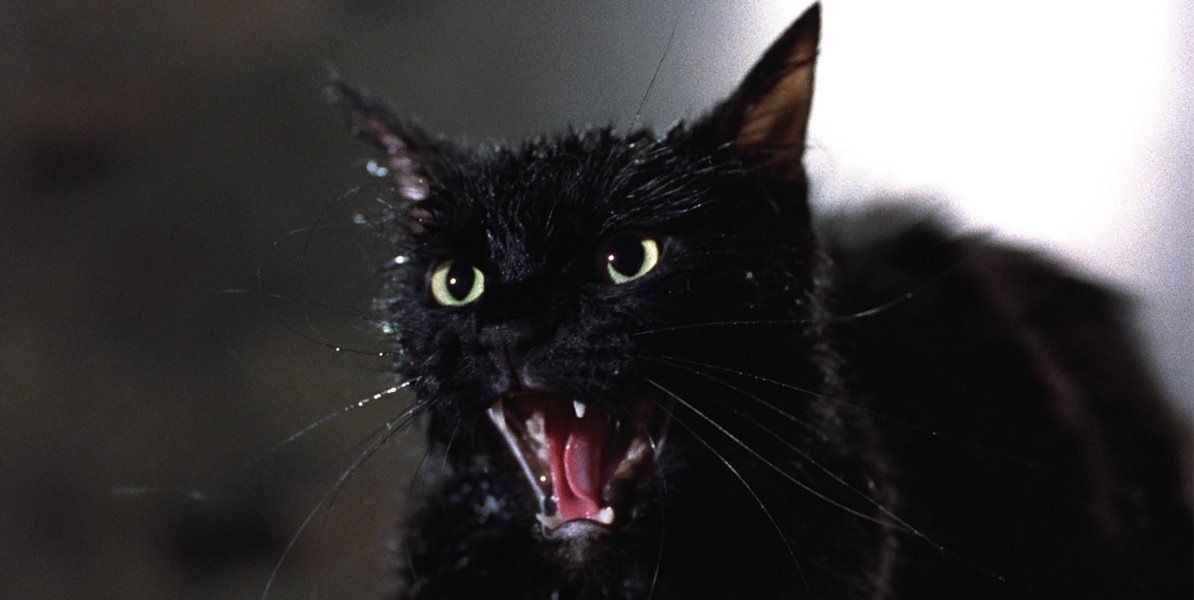
As I noted in my column three weeks ago, the original vision for Michael Gornick’s Creepshow 2 didn’t exactly match what audiences ended up seeing in theaters in 1987. The original plan was to have the film mirror the first Creepshow and be an anthology featuring five segments tied together by a separate narrative – but when budget restraints stymied the project in pre-production, two of the scripts got the axe. One was an original story titled “Pinfalls” that Stephen King imagined specifically for the production, and the other was an adaptation of the author’s short story “The Cat From Hell.”
The former never ended up finding its way in front of cameras, but the latter found new life from a new home a couple years later. George A. Romero’s anthology television series Tales From The Darkside was deemed popular enough to inspire the creation of a feature film iteration, and while screenwriter Michael McDowell penned two of the segments – an adaptation of Arthur Conan Doyle's "Lot No. 249" and a riff on Japanese folklore called “Lover’s Vow” – no extra work was necessary to create a third. Instead, the production used the “Cat From Hell” script that Romero had already penned, and included it in between McDowell’s chapters.
Stephen King already had a pre-existing relationship with Tales From The Darkside, as Season 1 featured an adaptation of his story “The Word Processor Of The Gods,” and he personally penned the Season 4 episode “Sorry, Right Number.” Tales From The Darkside: The Movie felt from the get-go like a perfect vehicle for a new big screen take on King, and only making things more comfortable was the fact that John Harrison was hired to direct – having been both the first assistant director and composer on Creepshow, and the director of “Sorry, Right Number.”
Tales From The Darkside: The Movie was released in the spring of 1990, and notably it’s the last time that we saw one of Stephen King’s short stories included in a big screen anthology – which is deeply unfortunate since it’s a film that proves how well-suited the medium is for the author’s stories. It’s a great interpretation of what is a crazy story, making this a fun new edition of Adapting Stephen King.
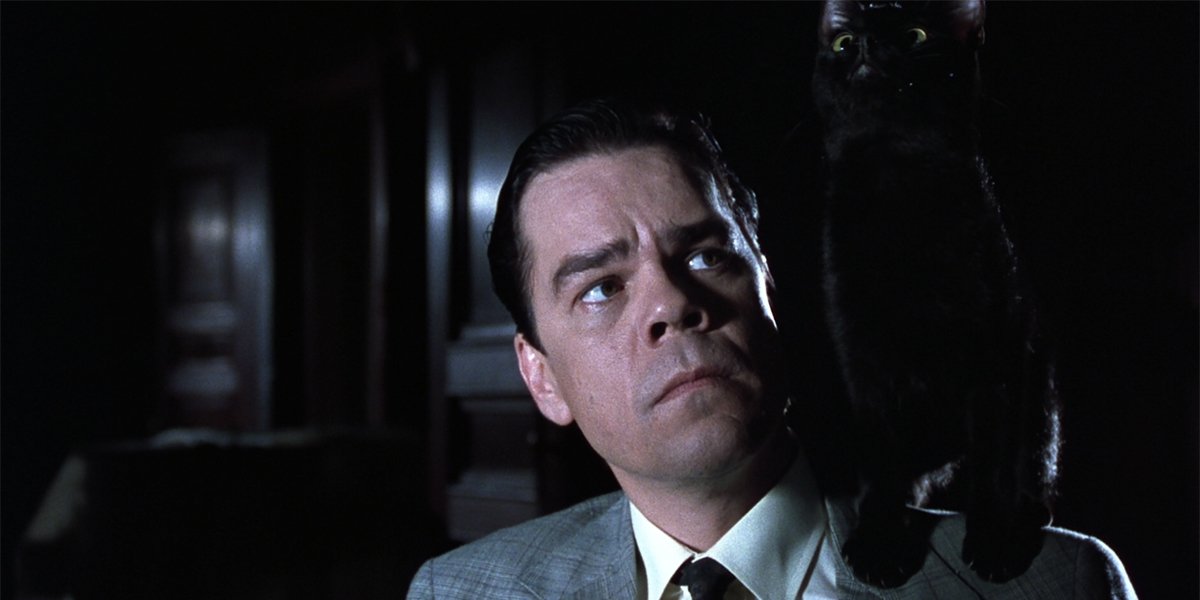
What “The Cat From Hell” Is About
While it was only relatively recently included in the 2008 collection Just After Sunset, “The Cat From Hell” is a story that Stephen King got published very early in his career – it first appeared in the June 1977 issue of the adult magazine Cavalier. This wasn’t purposeful; King was simply under the impression that it had been included in one of his collections previously, and his long-time assistant, Marsha DeFilippo, proved him wrong. This is a fun detail that is included in the “Sunset Notes” section of the book, along with the origin of the short.
Stephen King credits “The Cat From Hell” being served to him on a silver platter by Cavalier fiction editor Nye Willden, who one day sent him a photograph of a hissing cat – one that the writer noticed had a face “split down the middle, the fur on one side white and glossy black on the other.” Willden proposed using the image as inspiration for a short story contest, where King would write the first 500 words as a prompt, and then readers would submit the best conclusions for a chance at publication.
The author agreed, and everything went according to plan, but the extra bonus was that King ended up liking what he had written so much that he came up with his own ending and had it published in the magazine (he doesn’t recall if it was at the same time as the contest winner or later).
Your Daily Blend of Entertainment News
In “The Cat From Hell,” a hitman named John Halston arrives at the vast mansion belonging to an elderly and wealthy pharmaceutical executive named Drogan – a man who has reached out because he has a target for the assassin. The last few months of Drogan’s life have been plagued by the presence of a cat who has mysteriously managed to take the lives of the three people who lived with him in the house, and he wants the hired gun to kill the animal. Halston is incredulous, but his would-be employer claims he is the victim of retribution for the vast number of felines that were killed in the development of his company’s most successful drug, and he offers $12,000 to get the job done.
Not one to turn down a five-figure gig, Halston agrees, and he quickly gets the cat into a bag and drives with it away from the mansion. He thinks that the money is going to be the easiest he has ever earned, but underestimating his foe proves to be an outrageously fatal mistake.
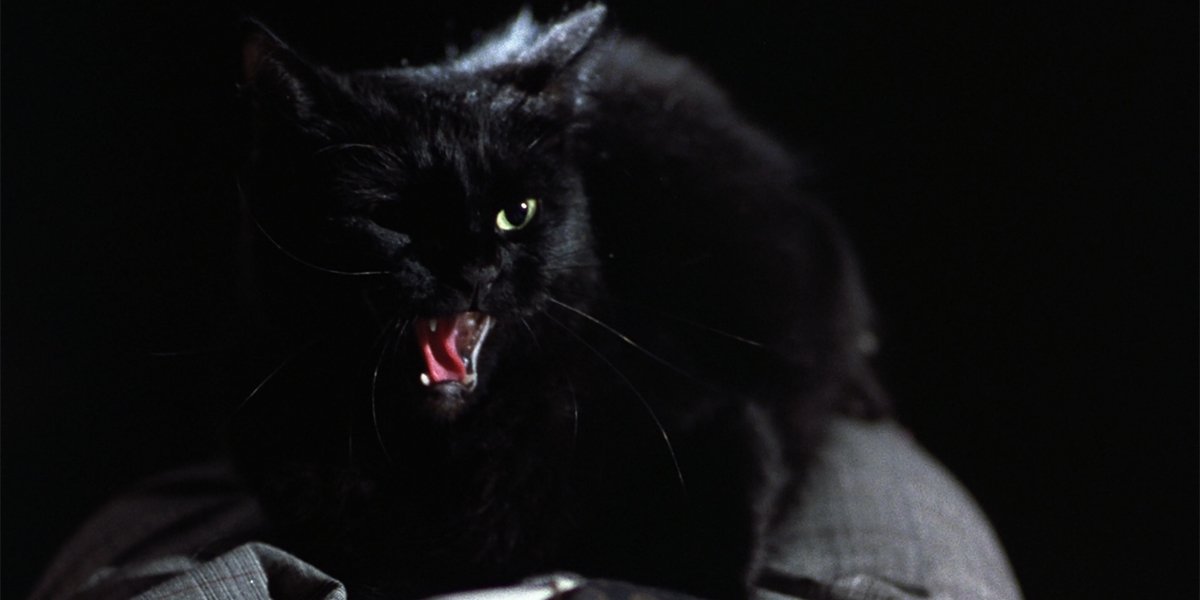
How John Harrison’s Tales From The Darkside: The Movie Differs From “The Cat From Hell”
Let’s start with the elephant in the room: the look of the cat is very different. While it was specifically the split coloration of the eponymous creature that first got Stephen King’s creative juices flowing in the writing of “The Cat From Hell,” it was a detail that the movie version couldn’t adapt. And while I can’t say definitively why the change was made, my bet is that it had something to do with the production not being able to find trained cats that fit the description, and local animal trainers being able to provide a plethora of black cats that could get the job done.
All that being said, given the elegant medium match that exists between short stories and anthologies, “The Cat From Hell” is a tale that didn’t need to be altered much as it was interpreted from the work of Stephen King and brought to the big screen. The basic premise is the same; Halston (David Johansen) and Drogan (William Hickey) are depicted perfectly in terms of the characters’ personalities; and all of Drogan’s associates – his sister, Amanda (Dolores Sutton), her friend Carolyn (Alice Drummond), and butler, Richard Gage (Mark Margolis) – meet endings identical to their on-the-page counterparts: respectively tripped on the stairs, smothered in bed, and killed in a car wreck.
It’s when the hired gun agrees to take on the job that Tales From The Darkside: The Movie begins to drift away from the source material – and not only in the fact that the contract is for $100,000 instead of $12,000. As originally written, Halston leaves Drogan’s mansion in his own car with the cat, but the film instead has it so that Drogan is the one who departs, setting the situation up so that he hops in the same taxi in which the killer arrived. Rather than simply bagging the animal, Halston instead has to hunt for it.
Eventually the two versions get back on the same page – as both have it so that the cat leaping into the assassin’s mouth, choking him, and then crawling into his body – but the end notes differ, on beyond the original having it take place in the driver's seat of a car, and the adaptation putting it in the foyer of Drogan's mansion. In Stephen King’s version, Halston is discovered on the side of the road by a farmer named Will Reuss, who is on hand to witness the cat slowly burst out of the killer's chest (please note that this was published two years before the release of Ridley Scott’s Alien). In Tales From The Darkside: The Movie, it is instead Drogan who is on hand to see the kitten’s excessively bloody exit out of Halston’s mouth (ironically, it probably would have been called an Alien rip-off without the change), and it’s an event the guilty millionaire perceives as so shocking that it kills him.
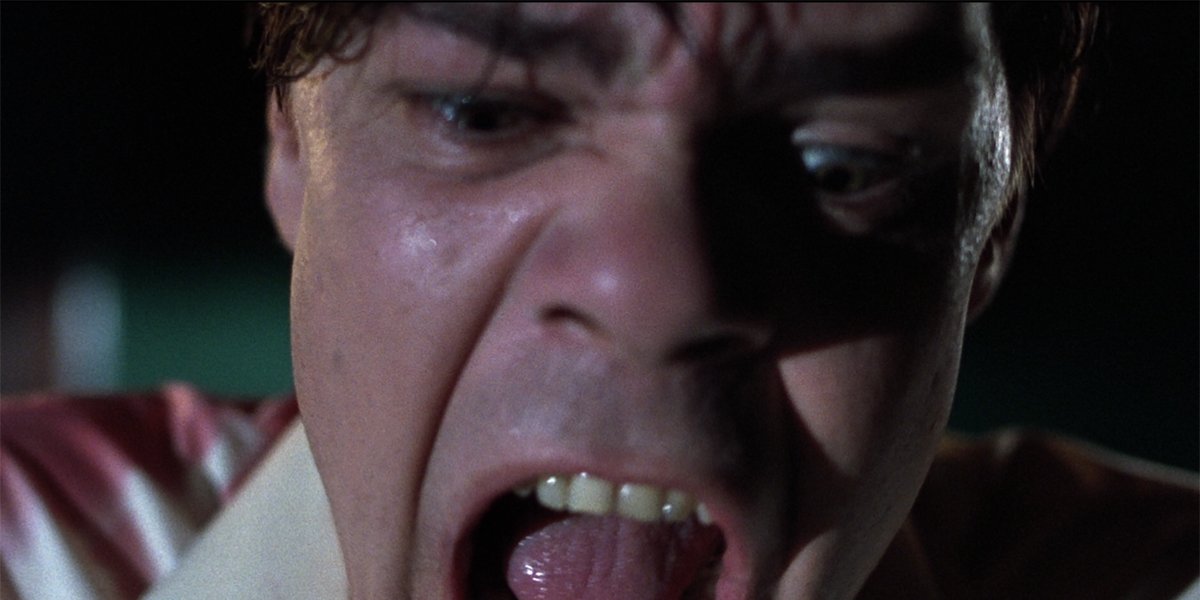
Is It Worthy Of The King?
On one of the filmmaker commentary tracks on the new Tales From The Darkside: The Movie Blu-ray, George A. Romero remarks,
This is, I think, really one of the best adaptations all down the line of Steve [King]’s stuff. There are several anthologies… and this is as good as it gets.
Obviously there is some personal pride in that statement given Romero’s involvement with the film, but it notably does come from a place of expertise knowing his frequent collaborations with Stephen King – and, more importantly, he is right.
It’s an uncommon occurrence that the quality of a Stephen King adaptation will eclipse the source material, but I would argue that this is a case here, as the “Cat From Hell” segment of Tales From The Darkside: The Movie is not only beautifully shot, incredibly well made, and rich in its tonal balance, but the story itself is improved with the alterations that George A. Romero makes in the script.
As originally penned by Stephen King, “The Cat From Hell” is a touch repetitive in having both Gage and Halston involved in feline-caused car wrecks, and the author narratively cheats a bit with Drogon having the hired killer put the animal in a shopping bag and drive it away from the premises before killing it. It makes far more sense to have Halston have to hunt the titular antagonist in the mansion before the insane climax that plays out in both versions.
What’s more, the adaptation provides much better closure with Drogon, as seeing him scared to death is much more satisfying than the awareness that Stephen King’s story provides regarding the cat heading off for some “unfinished business.” It’s funny that “The Cat From Hell” was originally written as a “best ending wins” prompt, because it’s a contest where Romero ultimately beats King.
It’s not just an excellent interpretation of the story, though, as John Harrison does a brilliant job shooting it. The cool and creepy use of blue light filters for the deadly flashback sequences provides the segment with a fun aesthetic match to the original Creepshow (again, fitting given the project’s origins), but that’s a really minor aspect of the directorial achievements. With credit also going to cinematographer Robert Draper, editor Harry B. Miller III, and production designer Ruth Ammon, the transitions between moments set in the past and in the present are brilliant – with the highlight being the use of a scrim on a soundstage to lead into the tale of Gage’s death behind the wheel.
It must additionally be said that the effects work featured in the climax is nothing short of phenomenal. There is no questioning that it is silly (it’s a cat leaping into a man’s throat, people), but it’s done in such a way that it looks surprisingly real – and it’s an amazing thing to see it simultaneously work as a gag and a scare. David Johansen additionally deserves immense credit for selling the hell out of it.
“The Cat From Hell” is a fantastic Stephen King adaptation, and it makes for the best segment of Tales From The Darkside: The Movie – but that by no means is an invitation to skip either “Lot 249” or “Lover’s Vow,” which are great in their own ways.
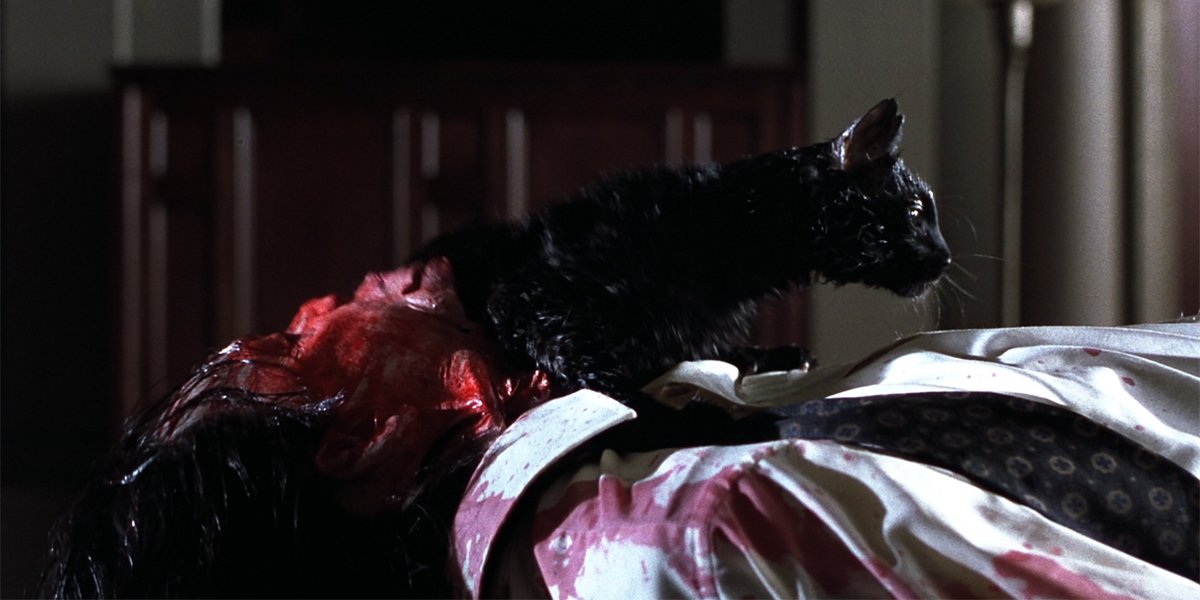
How To Watch John Harrison’s Tales From The Darkside: The Movie
If you currently have access to Cinemax Go through your cable service, or Cinemax subscription add-ons to either your Amazon Prime or Hulu accounts, you can start watching Tales From The Darkside: The Movie immediately after you finish the last word of this column. Even if you don’t, though, you can still find it easily: it’s available for digital rental or purchase from major retailers, and for those of you building the Ultimate Stephen King collection, you’re definitely going to want to check out Scream Factory’s Collector’s Edition Blu-ray.
Looking ahead, my column next week will not be a reading experience for any of you who suffer from musophobia, as I’ll be digging down into a cellar full of rats with a deep dive into Ralph S. Singleton’s Graveyard Shift. Look for new editions of Adapting Stephen King here on CinemaBlend every Wednesday, and you can check out all of my previous installments below.







Eric Eisenberg is the Assistant Managing Editor at CinemaBlend. After graduating Boston University and earning a bachelor’s degree in journalism, he took a part-time job as a staff writer for CinemaBlend, and after six months was offered the opportunity to move to Los Angeles and take on a newly created West Coast Editor position. Over a decade later, he's continuing to advance his interests and expertise. In addition to conducting filmmaker interviews and contributing to the news and feature content of the site, Eric also oversees the Movie Reviews section, writes the the weekend box office report (published Sundays), and is the site's resident Stephen King expert. He has two King-related columns.
